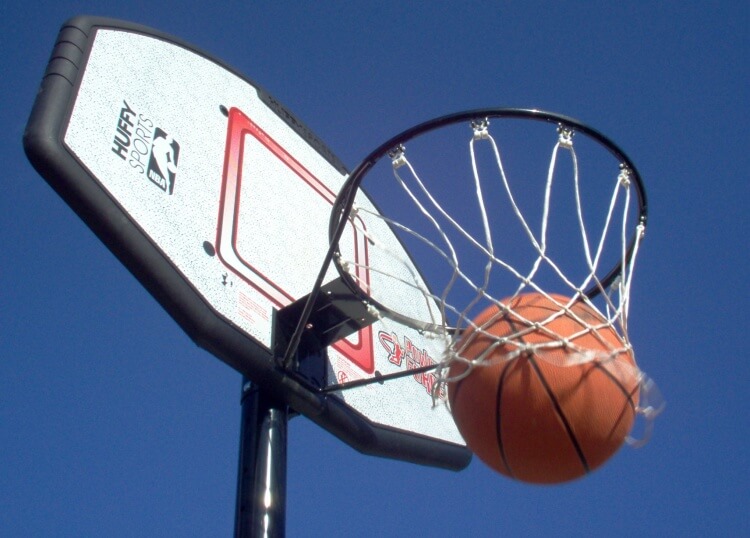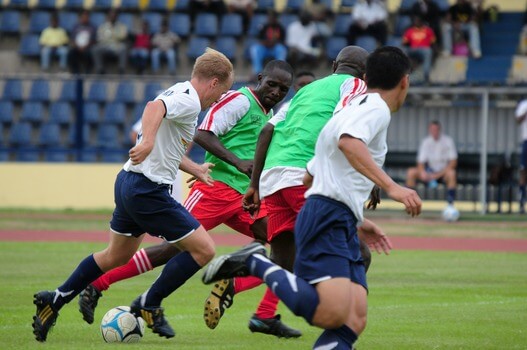In December, I wrote about how Deliberate Practice can enhance the drill structure of youth sport practices. In the midst of the article I conceded that practices that appear solely focused on skill acquisition can seem a lot less fun to both player and coach. I went on to promise to detail ideas aimed at enhancing the fun of Deliberate Practice drills. This month I plan to deliver on that promise and look at ways to make well thought-out drills which follow Deliberate Practice principles remain effective while also adding some fun.

Several years ago, Lockwood and Pearlman (2008) wrote a fantastic article suggesting how to enhance youth sport practices. They included the top four reasons kids play sports in the first place: (1) to have fun, (2) to be with friends, (3) to learn new skills, and (4) to be active (Coakley 2007; Ewing & Seefeldt 1996; Gould, Feltz, Horn, & Weiss 1982). Since we got drill efficacy out of the way in my last article, let’s take a look at what can make Deliberate Practice drills fun in your practices.
Breakthrough Basketball sells an ebook with 60 fun drills in it (60 Fun Basketball Drills and Games for Youth Coaches). I believe there are commonalities to the games that are featured in such books (you can find more than one if you look online) that you can apply to your drills and liven up your own practices. With a little thought and application of the principles I’ll lay out in this article you can come up with many of your own “fun drills”. In order to facilitate a “fun practice” filled with “fun drills” consider (1) challenging your athletes, (2) making drills similar to games situations, and (3) varying the “have to” – “want to” ratio.
Challenge takes on various forms. Some examples include competition versus other players, competition versus self, and competition versus the clock. Consider an old basketball standard; the Mikan drill. In this drill players are asked to use sound footwork and ball control to bank in shot after shot within a step of the basket. This drill can be repeated hundreds and even thousands of times to improve consistency near the rim for both forwards and guards; but you wouldn’t necessarily call it fun.
Named after the prolific scoring and rebounding Minneapolis Laker George Mikan, this 1960’s era drill personifies Deliberate Practice when performed correctly. It puts the player in an effective rebounding position and focuses on footwork in such a way as to put the player in great scoring position as well. However, the drill also epitomizes the kind of tedium that today’s athletes bemoan as “boring” when asked to perform it repeatedly.
To liven up the drill have your athlete perform the drill for one minute. In that minute, have partners count (1) repetitions, (2) makes, and/or (3) physical miscues (too many steps, dropping the ball below the shoulders, etc). Have teammates switch after one minute and total scores. Teammates can perform the next two minutes trying to improve on totals in some or all categories in terms of a (1) personal level, (2) versus their teammate, or (3) versus the other teammates in the practice. With the beneficial tenets of Deliberate Practice in place, players should see results from this drill at an increased clip both in practice and games (improved rebounding numbers and interior scoring percentages). And the addition of challenges adds fun.
Next consider the idea that some drills seem more inherently fun than others (plenty of examples of these “fun drills” on the link above). Perhaps another reason, in addition to challenge, has to do with the degree to which the drill directly resembles the game itself. Sticking with the basketball theme we can use the standard 3 on 2 to 2 on 1 drill. As a player, I loved the challenge of defending in this drill. As a coach I have been guilty of sucking the fun out of this drill by insisting that the offensive three should always score on an out-manned defensive two! But players continue to ask for this drill to be part of the practice plan because of the pace and challenge of it.
Many coaches like the skills emphasized in the 3-man weave drill (passing to a moving target, moving proficiently without the ball, etc) but players tire of running it, possibly because of the lack of similarity to the actual game. Coaches can enhance the enjoyment of this drill by incorporating both drills (3-2-1 and the weave) at the same time. Three players can weave the ball down (increase difficulty of this aspect of the drill by diminishing the amount of passes players can make down the court), and then tell the player who has made the lay-up to retreat on defense as the other two players come down against her on offense (3-man weave to a 2 on 1 drill).
Most coaches would agree that doing drills that players need, versus drills that players welcome are rarely the same drills! I call this the difference between “have to” drills and “want to” drills. While adding the elements written above will probably add some fun to what may have previously been “have to” drills, there may still be some “chalk talk” and technique-intensive episodes that remain seemingly unavoidable parts of your practice. My suggestion is to try to enhance your “have to” – “want to” drill ratio; and by that I mean decrease the “have to” and increase the “want to”. I’ve heard many coaches lament players of today “being soft because they always get their way”. Well entitlement has nothing to do with Self-Determination Theory. We all want to be self-directed, work towards excellence, and feel a part of something. So maximize the fun and minimize the drudgery. It will make everyone much happier and in the end probably much better.

Although this article only contains basketball examples, these practice modifications are not exclusive to basketball by a long shot. Recently, I came across this volleyball drill that encourages the Deliberate Practice of defensive and hitting transitions within a fun game-like environment. This soccer drill shows a plyometric and agility circuit that can be enhanced by having players take on teammates for a top time, or work in partners or compete as an entire team to complete the tasks in a time that they view as challenging. Certainly hundreds more examples exist on the Internet. However, the point of this article was to help you realize that as coaches with a little bit of thinking we can modify our drills to make them great learning experiences and lots of fun. Best of luck!

References
- Lockwood, P and Perlman, DJ, Enhancing the youth sport experience: a re-examination of methods, coaching style, and motivational climate, The Journal of Youth Sports: Youth First, 4(1), 2008, 30-34
- Coakley, J. (2007). Sport in Society: Issues and Controversies, 9th Ed McGraw-Hill
- Ewing, M.E. & Seefeldt, V, (1996). Patterns of participation and attrition in American agency – sponsored youth sports. In F.L. Smoll & R.E. Smeth (Eds.), Children and youth in sport: A hiopsychosocial perspective. 31-45. Madison, WI: Brown & Benchmark.
- Gould, D., Feltz, D., Hom, T., & Weiss, M. (1982). Reasons for attrition in competitive youth swimming. Journal of Sports Behavior. 5, 155-165.

